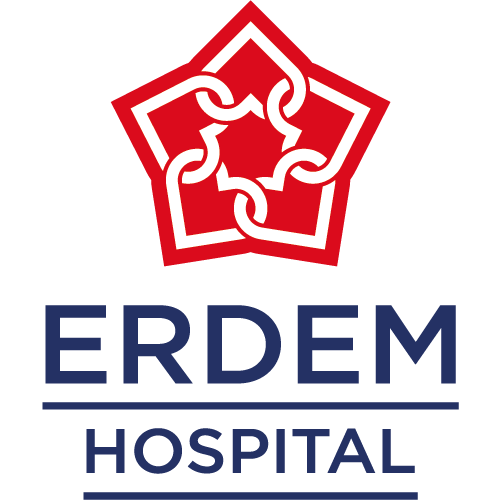Biometry is a crucial diagnostic procedure used in ophthalmology to measure the eye’s anatomical structures, particularly for selecting the appropriate intraocular lens (IOL) before cataract surgery. Precise biometry is essential to achieving optimal visual outcomes, reducing refractive errors, and enhancing post-surgical patient satisfaction. At Erdem Hospital, we employ cutting-edge biometry techniques to ensure accuracy and personalized patient care.
Importance of Biometry in Intraocular Lens Selection
The selection of an intraocular lens (IOL) is critical for patients undergoing cataract or refractive lens exchange surgery. Biometry provides precise calculations to:
- Determine the exact power of the intraocular lens.
- Minimize post-surgical refractive errors.
- Improve overall vision quality and reduce dependence on glasses.
- Enhance patient satisfaction with surgical outcomes.
How Biometry Works
Biometry measures key eye parameters that influence the power and positioning of the intraocular lens. These include:
- Axial Length (AL): The distance from the cornea to the retina, a fundamental factor in IOL power calculation.
- Corneal Curvature (Keratometry): Measures the cornea’s shape and curvature to determine astigmatism correction.
- Anterior Chamber Depth (ACD): The distance between the cornea and the lens, influencing lens positioning.
- Lens Thickness: Essential for accurate IOL power prediction.
- White-to-White Distance: Measures the corneal diameter, aiding in selecting the correct IOL size.
Biometry Techniques
Several advanced techniques are used to perform intraocular biometry, each offering specific advantages:
1. Optical Biometry (Non-Contact Method)
- Utilizes laser or partial coherence interferometry (PCI) for highly accurate measurements.
- Common devices: IOLMaster (Zeiss), Lenstar (Haag-Streit).
- Advantages: Faster, non-invasive, and highly precise.
2. Ultrasound Biometry (A-Scan)
- Uses high-frequency sound waves to measure axial length.
- Typically used when optical biometry is not feasible (e.g., dense cataracts).
- Requires direct contact with the cornea or the use of immersion techniques.
3. Swept-Source Optical Coherence Tomography (SS-OCT)
- A newer, highly precise technique for measuring multiple ocular parameters simultaneously.
- Provides enhanced visualization of posterior segment structures.
The Biometry Process: Step by Step
- Patient Preparation: The patient is seated, and measurements are taken without dilation.
- Scanning the Eye: The chosen biometry method (optical or ultrasound) is used to obtain precise measurements.
- Data Analysis: Advanced software calculates the ideal intraocular lens power using established formulas.
- IOL Selection: Based on biometry results, the most suitable lens type (monofocal, multifocal, or toric) is chosen.
- Final Review: The ophthalmologist verifies all measurements before proceeding with surgery.
Intraocular Lens Formulas for Biometry Calculation
Various formulas are used to determine the correct IOL power:
- SRK/T Formula: Commonly used for normal eye lengths.
- Holladay 1 & 2: Preferred for post-refractive surgery cases.
- Haigis Formula: Suitable for patients with varying anterior chamber depths.
- Barrett Universal II: A modern, highly accurate formula for a broad range of eye types.
Frequently Asked Questions (FAQs)
1. Why is biometry necessary before cataract surgery?
Biometry ensures that the most appropriate intraocular lens is selected, maximizing post-surgical vision quality.
2. Is biometry painful?
No, biometry is a non-invasive and painless procedure. Optical biometry requires no contact with the eye.
3. How long does the procedure take?
Biometry typically takes 10-15 minutes, depending on the method used.
4. What if I have a history of LASIK or other refractive surgery?
Special formulas (e.g., Barrett True-K, Haigis-L) are used to ensure accurate IOL selection for post-refractive surgery patients.
5. Can biometry detect other eye diseases?
Yes, biometry can reveal abnormalities such as unusually short or long eyes, which may indicate underlying conditions like high myopia or hyperopia.
6. How accurate are biometry measurements?
Modern optical biometry methods have an accuracy of within 0.1mm, significantly reducing post-surgical refractive errors.
7. Does biometry need to be repeated before surgery?
If the initial measurements are inconclusive or if there are changes in the patient’s eye condition, a repeat scan may be recommended.
Biometry is a vital preoperative step in ensuring successful intraocular lens implantation for cataract and refractive lens exchange surgeries. At Erdem Hospital, we utilize state-of-the-art biometry technology to provide accurate measurements and personalized treatment plans for our patients. If you are considering cataract surgery or need an intraocular lens assessment, schedule a consultation with our ophthalmology specialists to achieve the best possible visual outcome.
